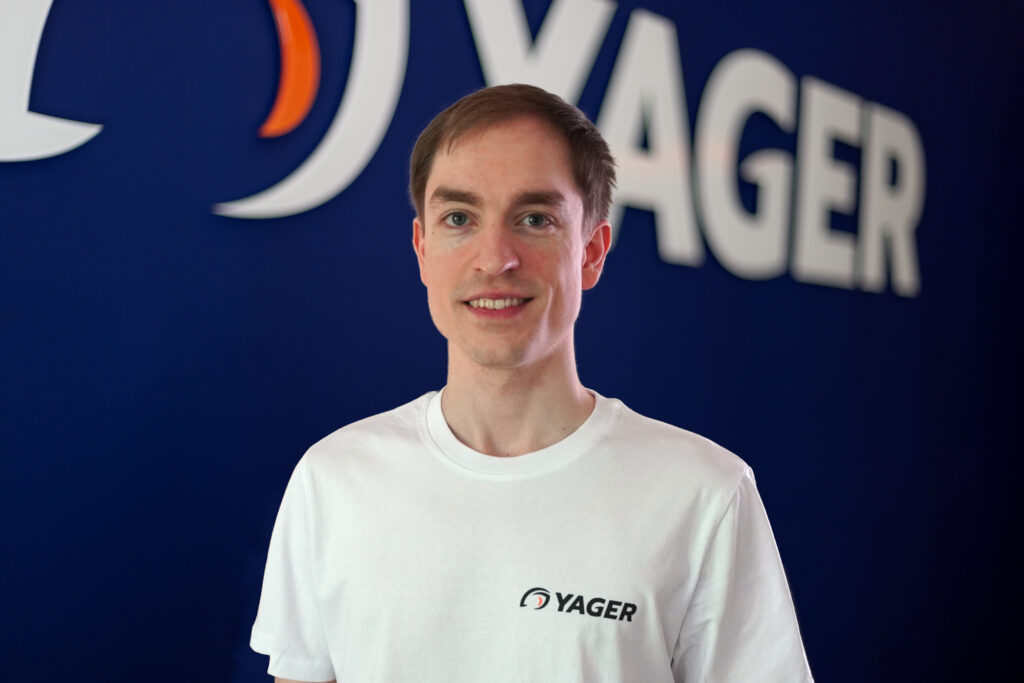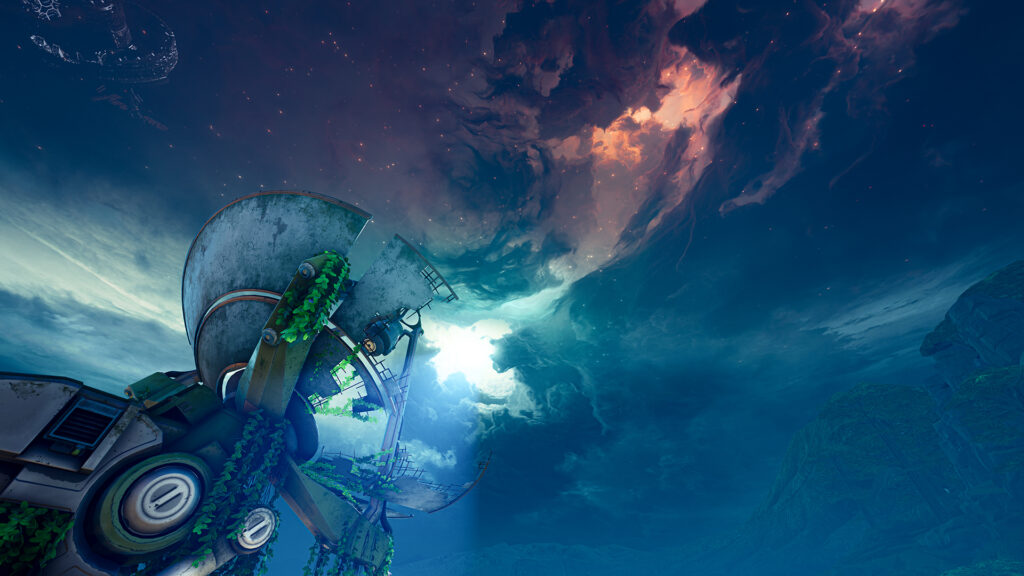As part of our “Behind the scenes: Unsung Heroes of Game Development” series, we have interviewed our Technical Artist Malte. Malte was so kind to share the ins and outs of his job with us, so enjoy the read.
Can you provide a brief overview of your role within the company and what a typical day in this role could look like?
A technical artist at YAGER is responsible for guiding other teams to work in a way that synergizes with technical implications, features and the framerate. You are also responsible for being the communicator between the artists with their needs and wishes and the programmers when it comes to stuff like “is it possible to have … replicated over the network in the map” etc.
A TA is also responsible for performance optimizations and of course tool development for the artists and game designers. It’s really a huge subject area, but that’s exactly what makes it so appealing.
A typical day could look like this: You start to work on a new water shader that creates waves when players run through it. Then one of the level designers needs help and writes to you on Slack: “The one file per actor system in Unreal is producing issues. It detects dependencies to levels that don’t exist”. You start a call to see the issue for yourself.
It turns out it is caused by the Houdini integration of the project. In this case the project is produced in co-development with another studio. That means you must figure out which team owns the Houdini integration and whom to talk to about the issue. If it is something artist specific, you redirect the artist to the person responsible, and they will have a call to get this issue fixed. If it is a general problem with the map your team is working on, you would need to figure out what this issue is and how to fix it.
Then there is a meeting in which the artists ask you about a shader solution for interiors of building windows. You say: “yes I can do that” and you put it into the backlog. Then you can continue to work on your shader 🙂
Of course you don’t have stuff like this every day but sometimes this is part of the job.
What is your background? How did you get started in this field?
I started learning Blender as a hobby when I was 13. I then began to experiment with game engines and was looking more into programming. I programmed a few open-source tools to help with game development like the imposter baker or the pivot painter addon for Blender. You can find them on my Art station page: https://www.artstation.com/maltes
Professionally I first started working as a full stack web developer with a focus on single page applications. However, this had nothing to do with game engines and 3D. So, I decided to study in that direction. With my 10 years of hobby experience at the time, I was able to get a student job at the company “Silver Atena GmbH”. There I was producing a 3D visualization for the industrial fair “Windmesse Hamburg” about their software solution for better controlling wind turbines based on their arrangements in bigger wind parks. After that I switched to their parent company “Expleo” to work on an airplane interior visualization. You can find this project on my art station page as well. After my studies, they hired me for a limited time to do 3 more visualizations.
While I was finishing the last one, the Covid pandemic happened and sent the entire aerospace field into trouble. For me that was the perfect time to start applying for a job in the games industry as a technical artist to combine all the knowledge I have about programming, 3D and game engines.

What specific skills or expertise do you bring to your role that you find most valuable in your work?
Beside my knowledge of Unreal, it would be programming skills and a good eye for graphics. My biggest focus is logic and math. Whether it’s a shader or a tool, the more logic it takes, the more fun it is to create.
How does your role contribute to the overall game development process within the company?
I’m right now the sole TA on the maps team managing everything that is related to that field there. Of course, the team would be able to always ask the TAs from the co-development studio for help with creating a map with the Houdini integration or with creating tools for them, but that would have an extreme impact on the time things take to be finished.
In the past I was the owner of bigger systems like the storm system in The Cycle: Frontier which gave the game the name. Furthermore, I worked on the “stuck detection”, that was an automatic way to figure out if a player got stuck somewhere, and then reported those findings to the database. This allowed the level designers to fix a lot of stuck spots before the release.
What other teams do you interact with and what are your daily “tools of the trade”?
This answer is simple, it is most of them:
- The maps team, as mentioned above.
- The content team, for weapon scopes, ammo counters and season pass transitions.
- The abilities team, for graphical effects that only apply on certain parts of the screen.
- The engineers, for stuff like making the getting stuck detection bulletproof against cheaters.
- The marketing team, to help them make trailers showing in-engine scenes.
My tools of the trade are: Unreal engine, P4V, Blender and Slack.
Can you describe any challenges you’ve faced in your role and how you’ve overcome them?
For the Cycle Frontier we once had a bug called “The space station is rusty”. I took a look, and indeed, every material was overlayed with a layer of rust. At first this was funny, but it turned out the layered material system had a severe ID offset bug which was caused by upgrading to the latest unreal engine version. It was time-consuming to fix it because you had to remove and recreate material layers for all the broken materials. But if you remove the layers in the wrong order the entire engine crashes.
My solution was to first create a documentation on how to fix the materials, then share it with the entire maps team and then we fixed it as a team in only half a week. Without teamwork this would have taken a lot longer!
What do you find most rewarding about working in the gaming industry?
For me it is the people that surround you. When I was working as a web developer, I asked my colleagues what they play, they looked at each other and one said I play saxophone.
Now in the games Industry everyone is talking about cool games or technology. It is a completely different world.
Can you share any advice for someone looking to pursue a career in your field within the gaming industry?
Yes, the best thing you can do is present yourself online as someone who has a lot of knowledge; Program something and present it online. Ideally you make it open-source and create a tutorial video on YouTube as a guide on how it works and how to use it. Create beautiful artwork and make a breakdown of how you achieved it and go into details on how performant it runs.
How do you see the future of gaming evolving, and what role do you think your department will play in shaping that future?
I think the biggest thing in the next few years will be AI generated content in select areas. If every level artist simply generates the environment assets they need, the content creation speeds up dramatically but lots of different assets also means more memory consumption. And that will most likely be the biggest challenge in the future, managing the memory budget and telling the artist to first look if there is already a barrel in the content-folder before generating a new one.
What would be the superpower alter-ego or character class of someone working in your department?
To be a great Technical Artist, you must choose the class mage and put your skill points in intelligence! To be a great Technical Artist, you must choose the class mage and put your skill points in intelligence!
That’s it for today, make sure to check the next episode of “Behind the Scenes: Unsung Heroes of Game Development” coming soon!

